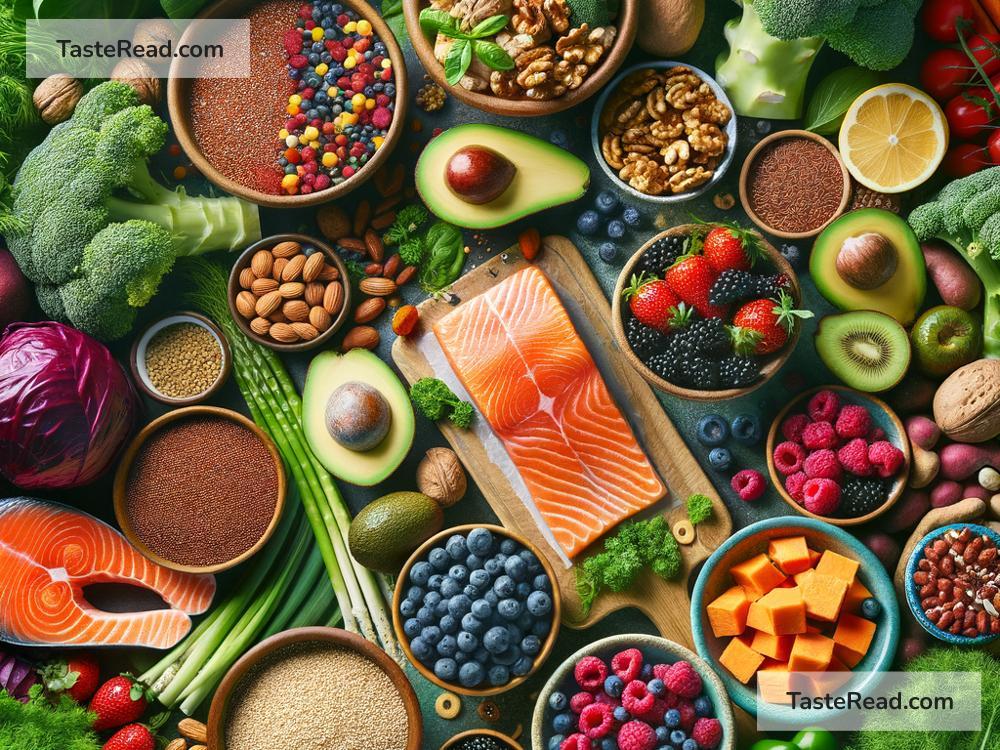How Food Choices Can Help Reduce Disordered Eating
Disordered eating affects millions of people around the world. It’s a complex issue that includes unhealthy eating habits, an obsession with food, and even fear of eating. Disordered eating isn’t just about food; it often comes with emotional and mental challenges like feelings of guilt, shame, or the desire to control weight. The good news is that choosing the right foods can help improve your relationship with eating, nourish your body, and provide the energy you need to live a balanced life.
This article will explore how food choices can play a supportive role in reducing disordered eating while helping you build healthier habits. If you’re struggling, know that you’re not alone, and seeking support from medical or mental health professionals is always an important step.
1. Start with Gentle, Balanced Meals
One common element of disordered eating is skipping meals, binge eating, or focusing only on certain food groups while avoiding others. To reset your body and mind, aim for gentle, balanced meals that include each of the main food groups: carbohydrates, protein, fats, fruits, and vegetables.
For example, a balanced breakfast could include whole-grain toast (carbs), scrambled eggs (protein and fat), and sliced avocado or berries (healthy fats and vitamins). These meals provide energy while teaching your body to trust food as a source of nourishment, not something to fear or control.
2. Incorporate Foods That Support Mental Health
Studies show that food can directly impact mood and mental health. If mental health issues like stress, anxiety, or depression are influencing disordered eating, try adding foods that help boost brain health. Omega-3 fatty acids, found in salmon, walnuts, and chia seeds, are great for improving mood and focus.
Similarly, healthy carbs like sweet potatoes, oats, or whole-grain pasta can stabilize your energy and lift your mood. Carbs naturally increase serotonin, a brain chemical that promotes feelings of happiness and calmness. Instead of avoiding carbs, focus on choosing nutritious, unprocessed options.
3. Eat Foods That Feel Easy on Your Stomach
If you’re struggling with disordered eating, you might have trouble digesting certain foods, especially heavy or greasy meals. Choosing foods that feel gentle and easy to eat can make your eating experience less stressful.
Consider easy-to-digest options like bananas, rice, cooked vegetables, skinless chicken, or plain yogurt. These foods are mild and less overwhelming, helping to rebuild trust in your body’s ability to handle eating.
4. Snack Smart
Snacking often gets a bad reputation, but snacks can be helpful for reducing disordered eating. Eating small, healthy snacks throughout the day can prevent feelings of extreme hunger that may lead to overeating later.
Choose snacks that nourish your body while also feeling enjoyable. Some good options include almonds or walnuts, hard-boiled eggs, fruit slices with nut butter, or whole-grain crackers with hummus. Over time, snacking can normalize your eating patterns and reduce the fear of eating at regular intervals.
5. Include Comfort Foods
Disordered eating often involves rigid rules about avoiding “bad” foods. But labeling foods as “good” or “bad” can make eating feel like a stressful battle. Instead, allow yourself to enjoy comfort foods that you genuinely crave, like pasta, cookies, or pizza. Eating these foods in moderation teaches you that no single meal or snack will ruin your health.
When you give yourself permission to eat foods you love, you take away the power they hold over you. Over time, you’ll begin to see all foods as part of a balanced life rather than something to fear or control.
6. Focus on Whole Foods, Not Numbers
Calorie counting is a common habit in disordered eating, but this focus can lead to feelings of anxiety or obsession. To move away from numbers, try focusing on whole, unprocessed foods instead. Whole foods include things like fresh vegetables, fruits, nuts, seeds, grains, and lean proteins.
For example, instead of counting the calories in a salad, enjoy the vibrant flavors and textures of fresh greens, cherry tomatoes, grilled chicken, olive oil, and a sprinkle of sesame seeds. Focusing on what’s on your plate rather than the numbers behind it creates a healthier mindset around food.
7. Stay Hydrated
Dehydration can affect your mood, energy, and appetite, potentially worsening disordered eating patterns. Sometimes people mistake thirst for hunger, which can lead to overeating or feeling out of control around food. Make sure to drink plenty of water throughout the day.
If plain water feels boring, try infused water with lemon, cucumber, or berries, herbal teas, or sparkling water. Staying hydrated supports your body’s systems and helps you feel more balanced overall.
Final Thoughts: Take It One Step at a Time
Changing disordered eating habits can feel overwhelming, but choosing foods that nourish your body and mind is a positive step forward. Focus on eating balanced meals, snacks, and comfort foods without judgment. Remember that food isn’t just about physical health—it plays a role in mental and emotional wellness, too.
Lastly, be kind to yourself through this process. Healing from disordered eating takes time, and there’s no “perfect” way to do it. Celebrate small wins, like enjoying a meal without guilt or listening to your hunger cues. Every step you take matters and gets you closer to a healthier relationship with food.
If you’re ever feeling stuck, don’t hesitate to reach out to a registered dietitian or therapist who specializes in eating disorders. Support from loved ones and professionals makes all the difference. Remember, you deserve to eat, enjoy food, and feel good inside and out!


